Written by Pinnacle Ambassador Morag Stewart
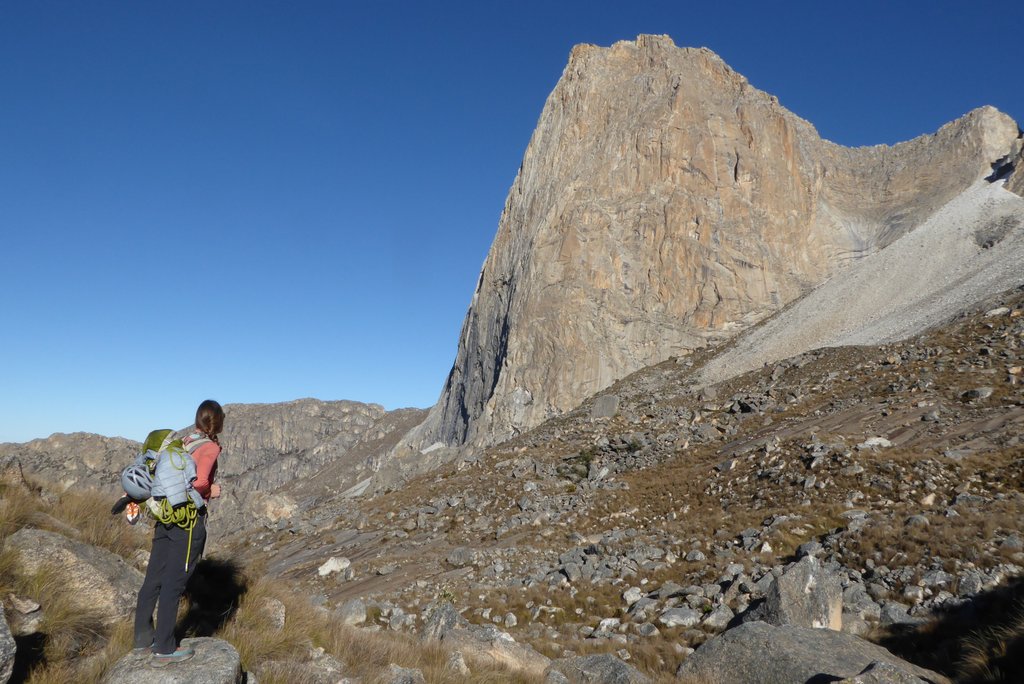
Have you ever dreamed of climbing remote snowy peaks or towering granite big walls? Will your aspirations take you to colder climates than Australia (e.g. anywhere else) or deeper into the wilderness than the standard 30 minute approach? It’s easy enough to take courses to learn some of the technical skills needed for such escapades, but it can be a little harder to find advice specific to the female adventurer. And it can be even harder to talk about the type of things that will make even the hardiest male counterparts blush (or strangely intrigued?!).
Although I’ve spent many years working outdoors, often in remote places of Australia, it wasn’t until 2018 that I learned about real cold. After spending 12 months climbing and trekking throughout the Andes, I’ve picked up a few tricks for making more comfortable or successful trips and turning what would be Type 3 fun into Type 1 or even Type 2.
These tips are definitely no shortcut to the summit or finish line, but making life a little more comfortable while on these trips helps focus your energy on other things, like navigating, climbing, looking after your partner, etc. Even tough adventurers can only put up with a certain number of discomforts before becoming distracted, so it’s my hope that these points can help focus and grow your adventure psych!
Clothing
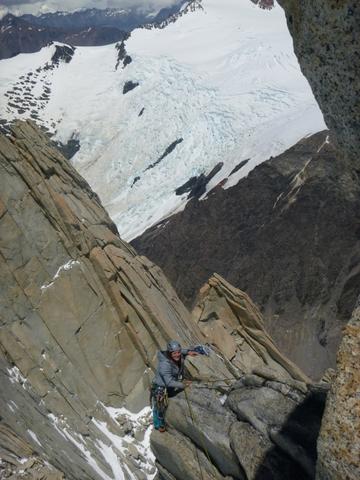 The first three points all have to do with warmth, and there is a good reason for this – women run cooler than men. This is why we always feel like we’re freezing our… um, toes off… with the office air conditioning cranked all the way up to 11. Because of having a reduced amount of muscle mass in comparison with the boys, we need to pay more attention to keeping warm.
The first three points all have to do with warmth, and there is a good reason for this – women run cooler than men. This is why we always feel like we’re freezing our… um, toes off… with the office air conditioning cranked all the way up to 11. Because of having a reduced amount of muscle mass in comparison with the boys, we need to pay more attention to keeping warm.
I don’t think it’s any secret that layering is the best choice for adventure climbing, though you will be surprised at how little you really need to wear when you are constantly moving and working those big muscle groups. Before you head out, obviously you will have checked the temperature and any rain/snow, but wind is the real killer. Remember to also check the aspect and think about how much sun/shade you’ll get, and keep in mind the options for bivvy or retreat if the weather turns nasty.
For most of my climbing in the Andes I wore a short sleeved thermal wool T-shirt and then layered with a thicker long-sleeved wool top and then a mid-weight puffy jacket (thicker than a ‘nano-puff’ but not a belay jacket). When I was climbing in snow/ice terrain and/or at high altitudes, I usually needed a thin pair of thermal leggings underneath my climbing pants, but my pants are thinner than many of the insulated soft-shell pants, so if you decide to go with insulated pants you may forego the thermals. I see some women take mountains of clothes with them on expedition – I recommend taking only the clothes that you are wearing and one additional set of thermals and socks for the tent. At least for short trips, anything else is overkill, but I am also probably very smelly.
ALWAYS take your beanie with you if you are climbing in cold climates, as it is ridiculous how much difference in temperature it can make. Even if you think you don’t have enough space in your bag, stuff it down your shirt or jacket pocket for later! I also always have my buff on to protect my neck and/or keep my crazy adventure hair out of the way when rapelling (even with a helmet my long hair gets crazy!).
Bras are unfortunately one of those things that I can’t get away with not wearing! Some ladies might be able to just wear a tight singlet/tank top, but it’s not for me. I prefer to wear a quick dry sports bra that is not too tight and has removemable padding. Many of the outdoor companies promote wool-based bras but I reckon I would want to add some padding to add extra warmth, dispel itchiness and cover any highbeams!
Footwear
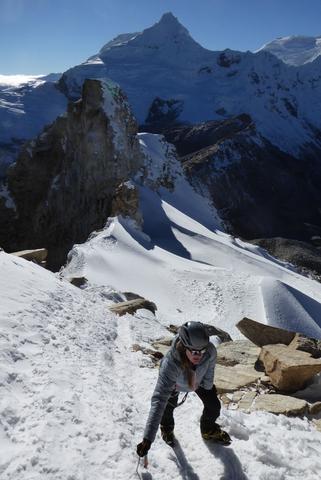 It’s no surprise that when adventuring in cold climates that it is CRUCIAL to look after our toes - I don’t fancy having to learn how to climb without them if I can avoid it. For mountaineering, I bought some of the warmest boots I possibly could (La Sportiva Spantix) to ensure that my toes could have the best chance at staying frostbite-free. While I did sacrifice some mobility and weight, as they are not the most svelte choice of boot, my feet were never cold in the Andes.
It’s no surprise that when adventuring in cold climates that it is CRUCIAL to look after our toes - I don’t fancy having to learn how to climb without them if I can avoid it. For mountaineering, I bought some of the warmest boots I possibly could (La Sportiva Spantix) to ensure that my toes could have the best chance at staying frostbite-free. While I did sacrifice some mobility and weight, as they are not the most svelte choice of boot, my feet were never cold in the Andes.
In warmer climates, a thinner boot with thicker socks might be a better choice, particularly in technical terrain. When I was climbing in the Fitz Roy range of Patagonia, I didn’t want to carry my heavy boots up the rock after crossing the glacier/snow, so I actually adjusted my crampons to fit my lightweight hiking boots or approach shoes, then wore thick socks with them which allowed me to save on weight. Unfortunately, this did also mean wet shoes when descending in the afternoon, as the snow had softened by this stage, but it was the right choice for me on those particular climbs.
When you’re rock climbing in cold conditions (like that Baffin Island trip you’re planning next year, right?) you might want to think about buying a pair of rock shoes which is a couple of sizes bigger than your usual. This way you can wear a pair of socks and they’ll still feel snug. It won’t make your feet feel “warm” as such, but it will help!
Sleeping Systems
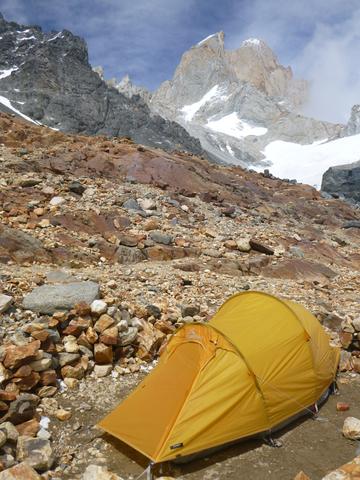 Quality sleep (i.e. reaching the REM phase) can sometimes be elusive in the mountains and you might have to settle for a “decent rest” instead. My climbing partner is of the freak variety and can sleep no matter what the conditions (e.g. upside down, in full daylight, and with machinegun-esque tent flappage) whereas I have had to implement a few tricks to achieve a similar night’s rest.
Quality sleep (i.e. reaching the REM phase) can sometimes be elusive in the mountains and you might have to settle for a “decent rest” instead. My climbing partner is of the freak variety and can sleep no matter what the conditions (e.g. upside down, in full daylight, and with machinegun-esque tent flappage) whereas I have had to implement a few tricks to achieve a similar night’s rest.
Firstly, make sure you have a sleeping bag that is appropriate for the conditions you are going to be sleeping in – you don’t want to carry a -20C sleeping bag if it’s only going to be 0C overnight. If it’s going to be slightly colder than the comfort level of your bag, consider an extra liner as well as long thermals and bed socks, before you take a heavier bag. Make sure you pack everything in a waterproof stuff sack, so you can sleep dry. My best tip for a sleeping bag is to get something with a hood at the top and zip at the bottom – covering or airing your head and feet is an easy way of moderating your temperature.
Once you’re all tucked up, it’s time to eat as much as you can, because you have probably burnt something like 10,000 calories during the day. It’s a good idea to keep some chocolate handy (not in bear country though…) so you can snack in the middle of the night – it helps keep you warm once your overactive metabolism powers through the cheesy pasta! Make sure you are hydrating at the same time… I know it is such a pain to wake up in the middle of the night and wee all the time, but it is so essential for our body to recover so we can keep going when on expeditions. Good hydration is also the key to preventing frostbite.
I strongly recommend the use of a she-wee and bottle when on expedition, as it is often too cold or not very safe to go wandering outside the tent (no-one wants to put their crampons on everytime they go for a wee!). If you’re shy about doing it in front of your tent partner, head out into the vestibule and rest assured, 99% of men will be using a bottle with their own he-wee!
Lastly, most adventures call for super early starts and I like to save time, which is why I sleep in my clothes if I can. This is also a good way to dry your clothes if they are not too wet. I like to wear a bra that is not too tight so I can sleep it in too – though that is only for game-day and not every night – I think my longest without taking my bra off is 100 hours, which I really don’t recommend!
Our favourite time of the month…
There is documented scientific evidence to show that during the high hormone phase of a lady adventurers 4-week cycle (that is to say 2 weeks before your period starts), energy levels can get really low. This is due to many biochemical reasons related to your hormones, but ultimately leads to the following – higher rates of muscle breakdown, decreased ability to burn carbohydrates, bloating, higher core temperatures, lower blood volume, and let’s not forget, abdominal cramps. Super exercise physiologist and nutrition scientist, Dr Stacy Sims, has written an excellent book on her scientific research behind womens’ hormonal cycles and their impact on physical performance.
For me, I really struggle on those days immediately before and the first day or two of my period. I am low on energy and uncomfortable (if not in pain). A few vitamin I’s (that’s Ibuprofen for those playing at home) can definitely help ease the pain, but will do little for energy levels. So really, my advice is that if you can sit out for a couple of days, do it.
Of course, on multi-week adventures or limited climbing weather windows, this is not always possible, and to really complicate matters, I found that being at high-altitude for weeks really messed up my normally pretty regular cycle so I had no idea when the moment would arrive! All I can recommend is go easy on yourself mentally, as awareness of the situation can be really helpful, and also make sure you are relentless in your self-care (i.e. drinking and eating enough, keeping warm).
According to Dr Sims, we are actually our strongest physically during our period as our hormones are in the low-phase, but it can be difficult to deal with the actual discomfort of protection. So in those situations, when adventures simply must continue, I suggest wearing as much protection as possible (i.e. Diva cup/tampons and napkins/pads), which means you don’t have to worry about changing your gear as often on those hanging belay-stations (fun!). I carried spare pads, a little toilet paper, small slither of soap and zip lock bags with me so that I could be reasonably clean and carry out my rubbish e.g. Leave No Trace.
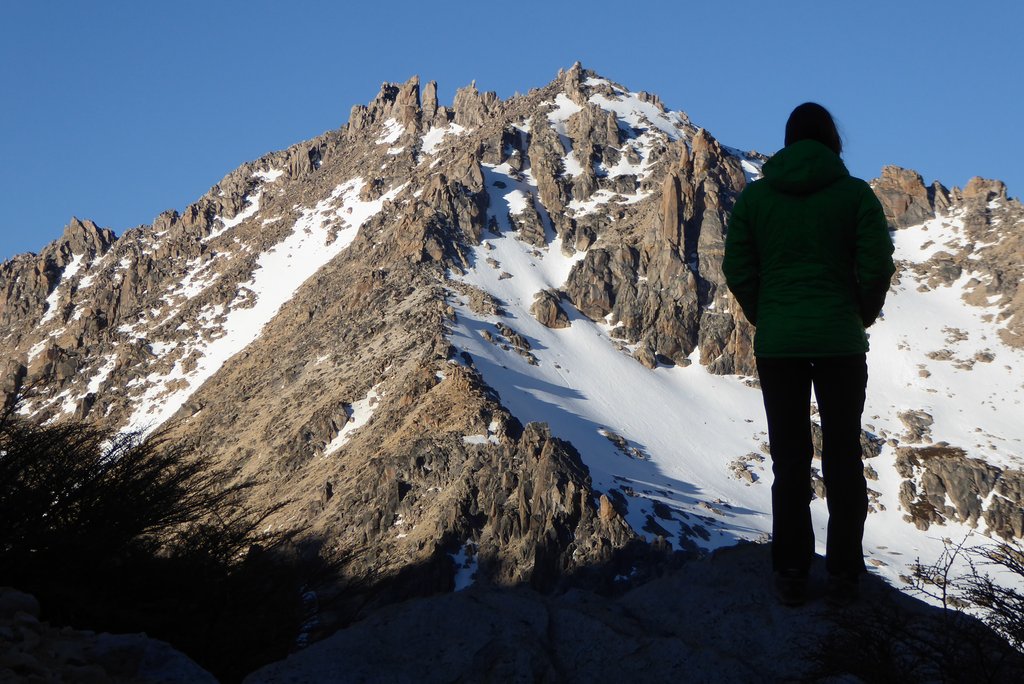
Climbing Strategy and Partners
While I don’t want to say that men are better than women at some things blah blah blah, I will make one helpful suggestion to the novice lady adventure climber – endurance. Base levels of female endurance have been shown to be higher than men’s, which we can use to our advantage when choosing our first adventure climbs. Whether on rock, snow or ice, why not try for a more mellow but longer route instead of going for a steeper, shorter climbs. Your natural endurance abilities will really help you out in this type of terrain. I really suggest climbing with pack in the gym or local crag to get used to carrying your gear with you – it is imperative that you get used to the change in body balance that even 1L of water and a jacket makes.
And lastly, one can never underestimate the importance of a good climbing partner and many of our our favourite lady adventures will say how different it is to climb with women compared to men. And while it can be inspirational to climb with or around other women, it doesn’t always mean a match made in heaven in terms of partnerships. For me, it’s about having a good laugh while staying aware, and to help bring out that adventure roar in me when in rather sticky situations! Although we can feel like a having a good cry in some exciting sections of climbing, it’s not always constructive and in those moments I find it’s so important that your partner can help focus your energy.
More hot tips??
If you ever want to talk all things adventure climbing, please hit me up! I’m more than happy to talk about these tips and many more, or to start organising the next big trip. You can reach me at smorag@hotmail.com or on Facebook (Morag Stewart).
Looking for more great reads? Subscribe to our newsletter to stay up to date with the latest climbing tech, crag recommendations and upcoming events.

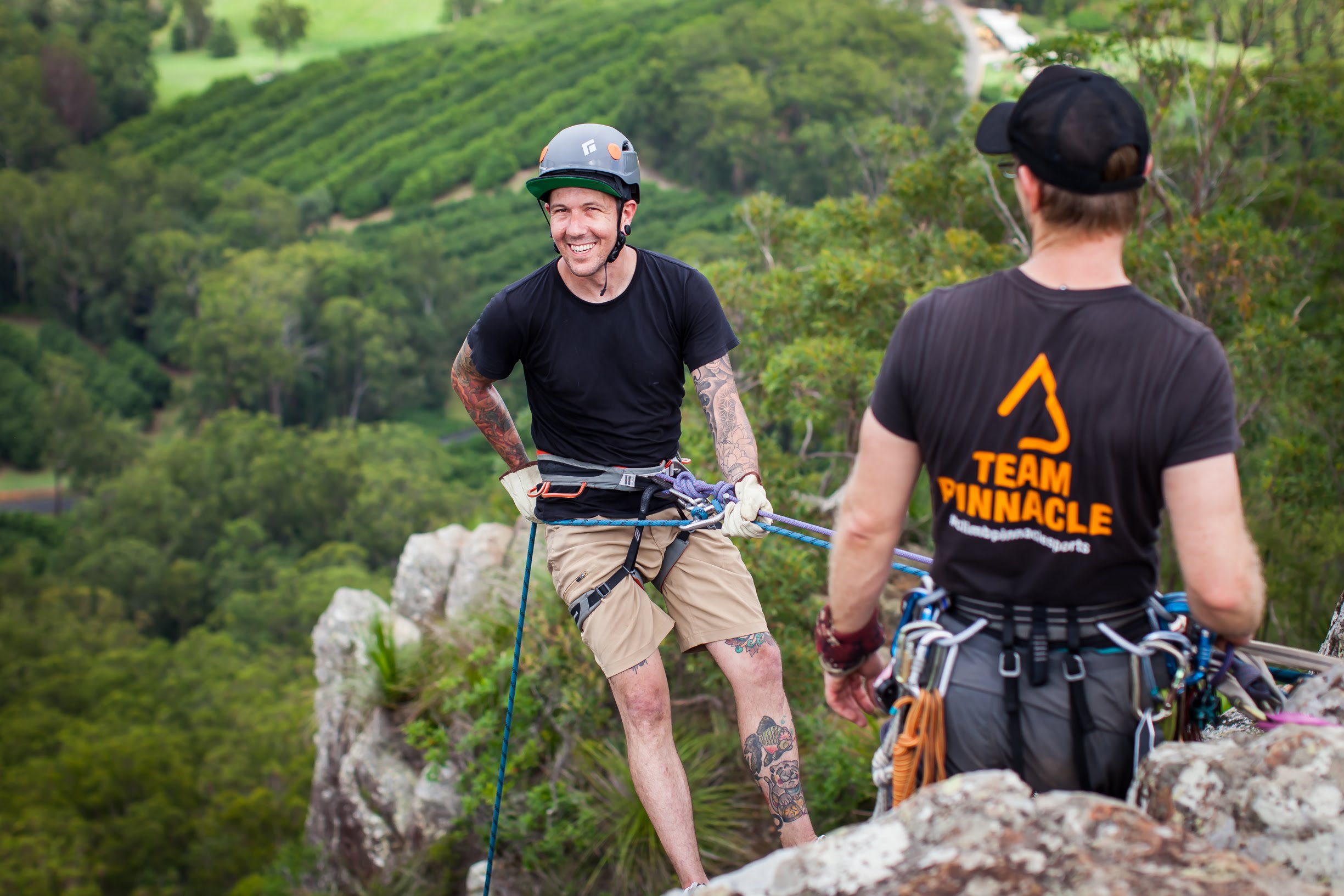

 The first three points all have to do with warmth, and there is a good reason for this – women run cooler than men. This is why we always feel like we’re freezing our… um, toes off… with the office air conditioning cranked all the way up to 11. Because of having a reduced amount of muscle mass in comparison with the boys, we need to pay more attention to keeping warm.
The first three points all have to do with warmth, and there is a good reason for this – women run cooler than men. This is why we always feel like we’re freezing our… um, toes off… with the office air conditioning cranked all the way up to 11. Because of having a reduced amount of muscle mass in comparison with the boys, we need to pay more attention to keeping warm. It’s no surprise that when adventuring in cold climates that it is CRUCIAL to look after our toes - I don’t fancy having to learn how to climb without them if I can avoid it. For mountaineering, I bought some of the warmest boots I possibly could (La Sportiva Spantix) to ensure that my toes could have the best chance at staying frostbite-free. While I did sacrifice some mobility and weight, as they are not the most svelte choice of boot, my feet were never cold in the Andes.
It’s no surprise that when adventuring in cold climates that it is CRUCIAL to look after our toes - I don’t fancy having to learn how to climb without them if I can avoid it. For mountaineering, I bought some of the warmest boots I possibly could (La Sportiva Spantix) to ensure that my toes could have the best chance at staying frostbite-free. While I did sacrifice some mobility and weight, as they are not the most svelte choice of boot, my feet were never cold in the Andes. Quality sleep (i.e. reaching the REM phase) can sometimes be elusive in the mountains and you might have to settle for a “decent rest” instead. My climbing partner is of the freak variety and can sleep no matter what the conditions (e.g. upside down, in full daylight, and with machinegun-esque tent flappage) whereas I have had to implement a few tricks to achieve a similar night’s rest.
Quality sleep (i.e. reaching the REM phase) can sometimes be elusive in the mountains and you might have to settle for a “decent rest” instead. My climbing partner is of the freak variety and can sleep no matter what the conditions (e.g. upside down, in full daylight, and with machinegun-esque tent flappage) whereas I have had to implement a few tricks to achieve a similar night’s rest.




